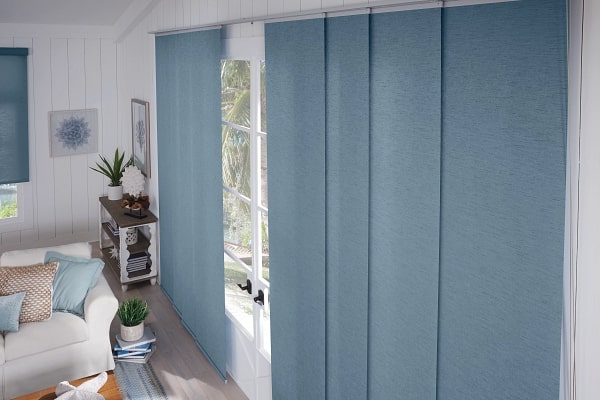Window treatments come in many forms, but among the classics are the soft treatments of draping fabrics…these window coverings provide endless textures, weights and colors to select from in every space. Fabric treatments provide an elegant look and other unique benefits, but the fabric choice makes all the difference.

In general, window furnishings aren’t just a style statement. They provide energy-saving benefits plus noise reduction and light control, not to mention privacy.
Today, you have the chance to maximize these benefits while also achieving the look you desire and the maintenance you’re willing to commit to. It all comes down to your fabric choice for window treatments.
Read this article and, when you select your next window treatments, you’ll know how to:
- Drape your windows with the right amount of “hang”
- Avoid wrinkles
- Avoid fabric disintegration
- And enjoy the fullness of fabric you love
How fabric hangs
The weight and weave of fabric both impact how it hangs.
Window treatments only drape if they have enough weight to do so. They also benefit from a thinner weave of the individual fibers that they’re made of…this is what allows fabric to pool or be gathered without looking “crumply.”
One of today’s most popular fabrics for the most economical window treatments is polyester. As a synthetic material, it can be dyed to look like anything…however, it does not have the weight or the weave to drape beautifully. Polyester must be lined or hemmed to give it any hope of draping the way we want. Instead, it hangs wispily and looks like the bargain you got, not the investment you made.

The problem with linen wrinkles
A far more attractive fabric that drapes elegantly is linen…and linen is the runner-up for window treatment fabrics in terms of popularity among manufacturers. However, linen window treatments can lead to heartbreak, because once linen wrinkles (which it does over time), wrinkles canNOT be taken out.
Linen can’t be steamed!!
On the other end of the spectrum, one of the most wrinkle-resistant fabrics is silk, which is also a popular selection for window treatments. Could silk be the answer for homeowners pining for elegance and lasting beauty?…
EXPERT TIP: If elegance is what you’re after, consider hanging your window furnishings higher up, from just below the crown molding. This is much higher than you’ve seen in many homes…but it is the best way to make ceilings look taller and rooms feel larger. It embodies elegance in a remarkable way!!

How fabric responds to light
Silk is considered a low-wrinkle luxury fabric in window treatments, but it’s not without its own issues.
At the top of the list is how susceptible silk is to light damage. Under direct sunlight, silk will disintegrate. (Hello, Texas sun…)
The solution? Silk window treatments are interlined with a solid fabric to protect it. Conveniently, this also gives silk added weight to drape better…though, if the lining fabric doesn’t drape well, it might rob some of silk’s flowy quality.
Fabric fullness
The fullness of fabric refers to how much of it is needed to create a gathered look. When draping window treatments in a home, the fullness of your fabric selection makes a tremendous difference in the final look.
Fortunately, the lining of silk window treatments that protects it from sun damage also gives silk a fullness that is both luscious and beautifully weighted.
Another option for a fuller fabric is wool. Window treatments made of wool are also wrinkle resistant and can be dyed in an endless palette of colors. The one disadvantage for the look of some homes is that wool can sometimes look warm or insulated. That’s not always what we’re going for.
Cotton, too, is a full fabric that offers many of the same benefits that wool does. Cotton will wrinkle, but unlike linen it can be steamed!!
Window furnishings upscale the look of an environment in a tremendous way. Now that you know what fabrics to look for, consider joining the conversation in our private design group to see what others have to say!

